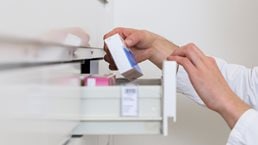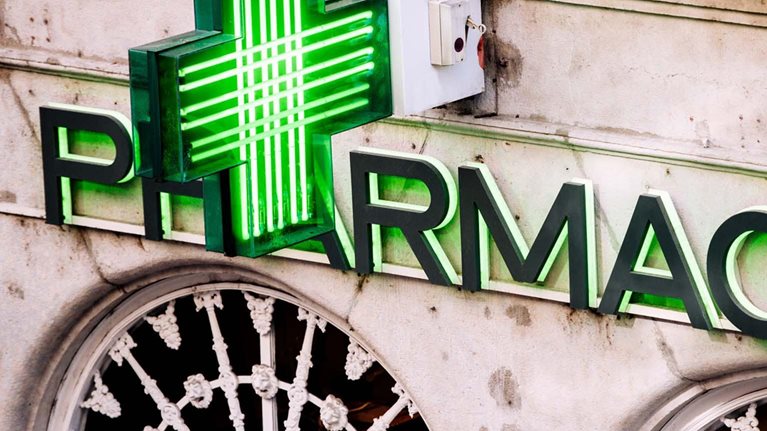Until four years ago, Germany was one of very few Western countries where pharmaceutical companies remained free to set prices at the level they chose. As a result, drug prices were renowned for being as much as 26 percent higher than average prices across the EU. However, all this changed at the beginning of 2011. Faced with spiraling costs and the prospect of an €11 billion deficit in the state’s statutory health insurance scheme, the government took action.
As part of a package of healthcare reforms, it introduced a new law, known as AMNOG. This now meant pharma companies were required to demonstrate whether a new drug offered additional clinical benefits over existing drugs. Four years down the road and it is clear AMNOG has succeeded in lowering the government’s pharmaceutical bill, while the reimbursement price of a range of new drugs has fallen below the EU average.
In some ways, Germany has become a poster child for experimenting with pharma pricing and reimbursement, and those four and a half years – during which 159 benefit assessments were initiated and 124 completed – also reveal some important insights for pharma companies seeking to enter the German market with new innovative therapies.
The savings package
AMNOG was one of three reforms the government introduced to bring the SHI’s looming deficit under control, and two of these directly targeted pharmaceutical costs. For immediate impact, the government introduced a price freeze on all drugs in the market and increased the mandatory rebate companies had to grant SHI funds for the purchase of their drugs from 6 percent to 16 percent of the list price. AMNOG, meanwhile, sought to achieve a longer-term reduction of drug prices.
Under AMNOG, pharmaceutical companies can still set the initial list price when they bring a new drug to market. Upon launch, however, they have to submit a cost-benefit dossier to G-BA, the self-governance body that makes reimbursement decisions. On the basis of the dossier, and views from other stakeholders, G-BA assesses the drug’s benefits over recognized, standard therapies, taking into account conversations with the Institute for Quality and Efficiency in Healthcare (IQWiG) to consider patient-related benefits.
G-BA has six months to make this assessment and award the drug a final rating of between one and six – Level 1 denotes “extensive benefit” over a chosen comparator, while Level 6 means “less benefit” than the comparator. The same product can receive different ratings based on patient subpopulations within the product’s licensed indication. Based on these ratings, the company then enters negotiations with the National Association of Statutory Health Insurances, which represents all the SHI funds, to set the reimbursement price. One year after market launch, this reimbursement price replaces the initial list price of the drug.

Would you like to learn more about our Life Sciences Practice?
Lessons learned
Of the 124 assessments completed since January 2011, 51 percent received a positive rating – Level 4 or above – either for the drug as a whole or for at least one of its subpopulations. The findings from reviewing these assessments point to some important lessons for the industry:
G-BA’s choice of comparator is key
G-BA recommends which comparators to use for a benefit assessment so providing head-to-head clinical evidence against the chosen comparator is a key factor for success. Products that use evidence against a different comparator are mostly rewarded a Level 5 rating (no proof of benefit), where G-BA argues that the company did not provide valid data to conduct the benefit assessment. As the price of the drug cannot exceed that of the cheapest comparator, this will have a considerable impact on the reimbursement price and potentially profit margins, particularly if the comparator is generic.
The choice of comparator has sometimes proved controversial, especially if it is not the one used in company trials or chosen by other health technology assessment bodies in Europe. To gain a higher rating, companies may have to incur the cost of gathering new evidence against the comparator – a cost that may not be justifiable just to gain access to a single market. Indeed, some manufacturers have withdrawn their products from the German market after disputes over the choice of generic comparators, such as Boehringer Ingelheim and Lilly, which withdrew diabetes drug Trajenta (linagliptin) in September 2011. Overall, there have been 13 opt-outs from the German market so far.
Use patient-relevant endpoints
The law now requires that a new drug be assessed against the comparator using patient-relevant clinical endpoints, particularly morbidity, mortality, and quality of life, as opposed to surrogate endpoints. There have been many discussions between IQWiG, G-BA, and pharma companies as to which endpoints are patient-relevant for different indications. For example, the German Association for Hematology and Oncology regards progression-free survival as an important endpoint for assessing the benefits of cancer drugs but G-BA, because it sees PFS as the outcome of mortality and morbidity, often does not take PFS into account.
Likewise, IQWiG recommended a Level 5 “no benefit” rating for the hepatitis C drugs Victrelis (boceprevir) and Incivek (telaprevir) on the grounds it did not recognize a sustained virological response as a formally validated patient-relevant endpoint, and therefore saw no proof the drugs offered additional benefits over the comparator therapies interferones and ribavirin. In the hearing process, however, G-BA raised the rating to Level 4 “benefit not quantifiable” after heated discussions against IQWiG’s recommendation.
Check quality of data analysis
More than half of the 48 products that received a Level 5 “no benefit” rating in the past four years did so because of invalid data. This included, for example, using questionnaires that had not been validated for use in the particular indication, or failing to administer the drug or its comparator in accordance with German marketing authorization.
Oversights on the part of companies might explain this poor adherence to IQWiG and G-BA data quality standards but some requirements are particular to the German market and not necessarily aligned with international drug development protocols. A case in point is the tendency for IQWiG to analyse a drug’s efficacy within many patient subpopulations, which may leave companies with insufficient data to draw statistically relevant findings.
G-BA doesn’t always follow IQWiG’s recommendations
Of the 30 benefit assessments made in 2013, G-BA’s final rating differed from IQWiG’s recommendation in 17 cases (57 percent). One example is where IQWiG concluded that Pfizer’s Xalkori was a Level 5 as it gave no additional benefits over docetaxel or permetrexed for non-small cell lung cancer patients, yet G-BA gave it a Level 2. This result came about because each interpreted the data on quality of life and side effects in its own way. This variation highlights the difference in focus between the two organizations, with IQWiG more focused on the science and methodology, while G-BA looks at the broader picture.
Companies can debate decisions during the hearing process and if new data is presented G-BA can ask IQWiG to review its recommendation. In 2013, four out of ten of these reassessments resulted in a higher rating from IQWiG.
Reimbursement price depends on a number of factors
Several factors are considered in the pricing discussion beyond the benefit rating. This rating will certainly be the starting point for reimbursement negotiations but the precise outcome of the negotiations differs drug by drug. Because of this fluidity it has been hard to predict exactly what pricing outcomes will be. The drug might also receive different benefit ratings for different subpopulations, but will ultimately receive only a single price that takes into account the various ratings. In addition, the reimbursement price also depends on the price of the comparator therapy and of other therapies on the market – again viewed on a subpopulation level – and on price levels in other European countries. A review of decisions over the past four years finds there is also no direct correlation between the benefit rating awarded and the extent to which the original list price is reduced.
The future
AMNOG has had its fair share of opponents but one criticism that hasn’t yet materialized is the impact on innovation. In the first four and a half years of AMNOG, 124 new products completed the assessment process and launched, with only 13 products withdrawn from the market due to Level 5 “no additional benefit” ratings or failed price negotiations. Judged on these figures, companies are still innovating in Germany, although only time will tell whether price pressures will change this.
Meanwhile, the actual rating and price-setting procedure is not set in stone, and is seen more as a learning process that can be adapted if necessary. Indeed, the government has said the system will be reviewed this summer and, if needed, the legislation will be adapted to resolve any issues.
While the benefit assessment and rating system is now working relatively smoothly, and can be managed appropriately by pharmaceutical companies, the pricing negotiation process seems more unpredictable given that prices are not always clearly linked to ratings. This inevitably contributes to the higher uncertainty that has surrounded new product launches in Germany.
AMNOG has without doubt been controversial but it is here to stay. Pharma companies will have to learn to live with an unpredictable market access process. However, with planning and learning from the experience to date, success in Germany is within reach.
This article was first published in Pharma Times, May 2015.

